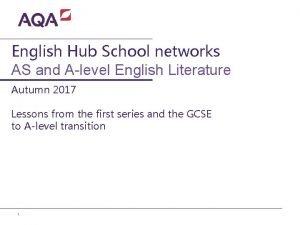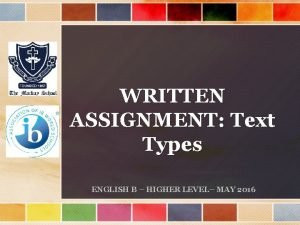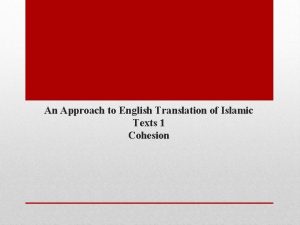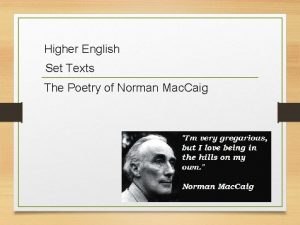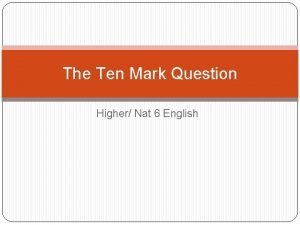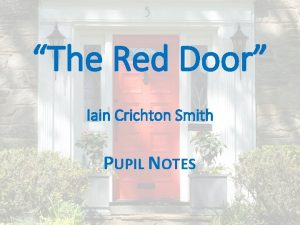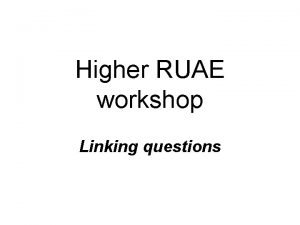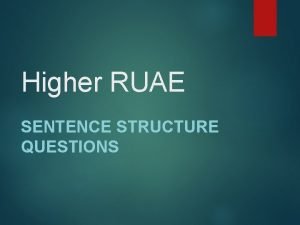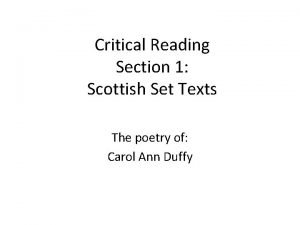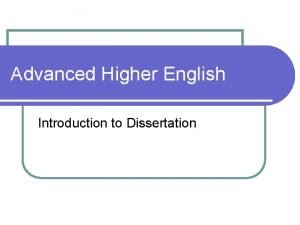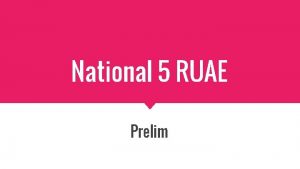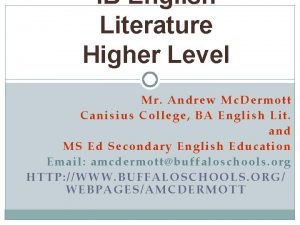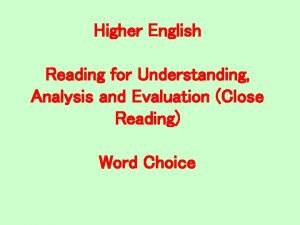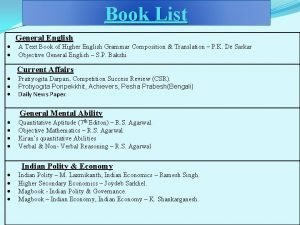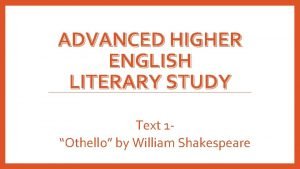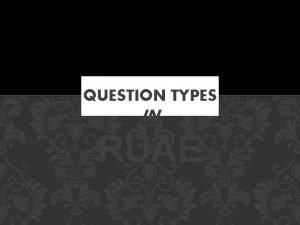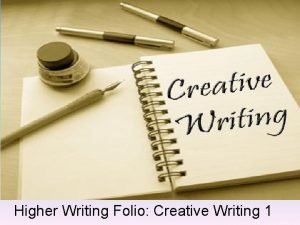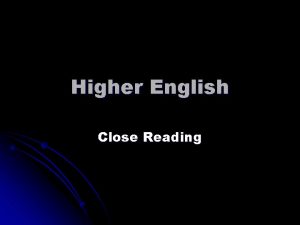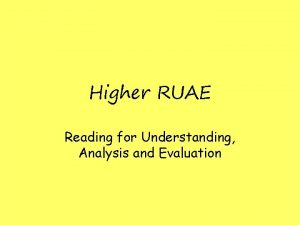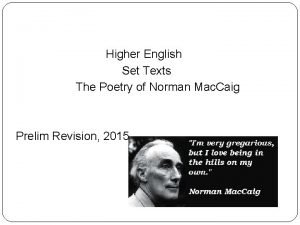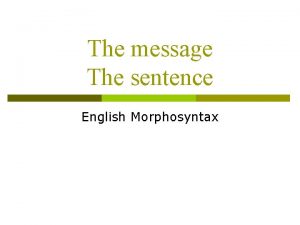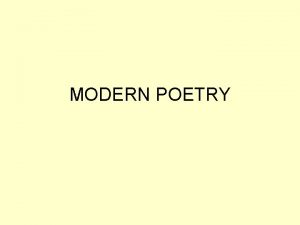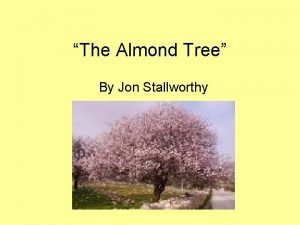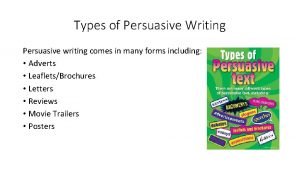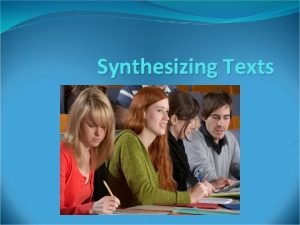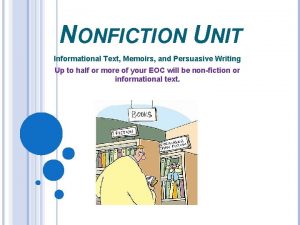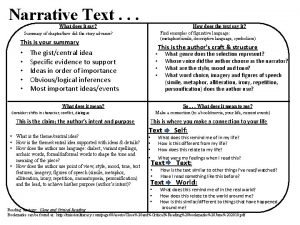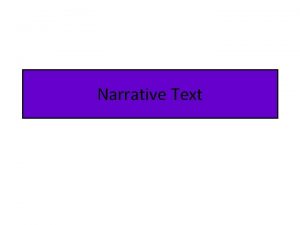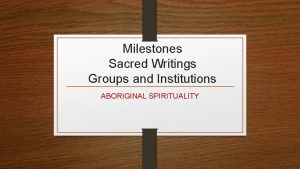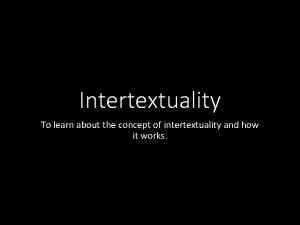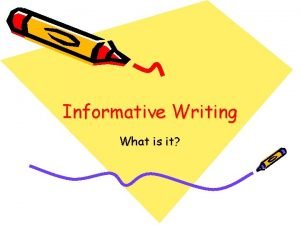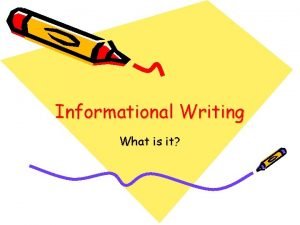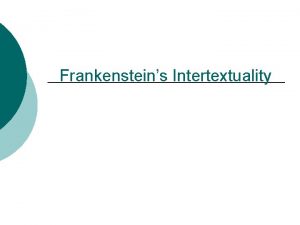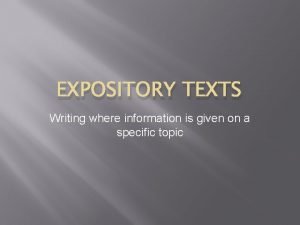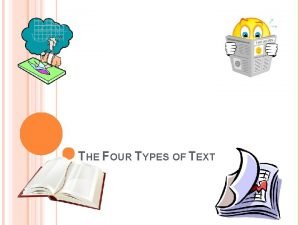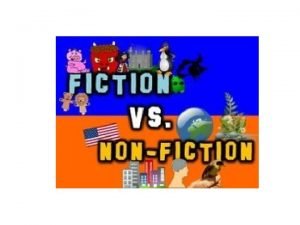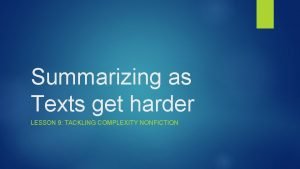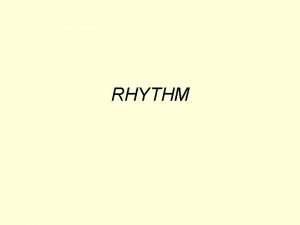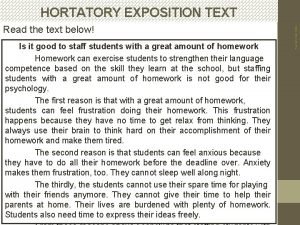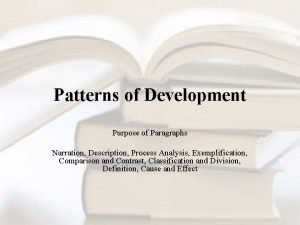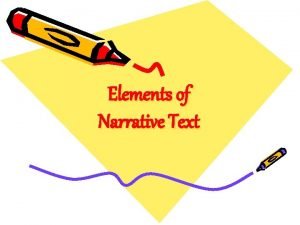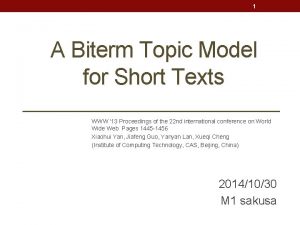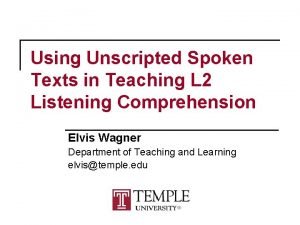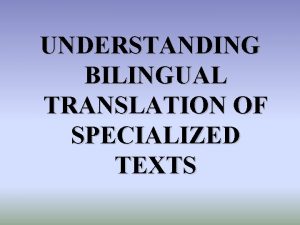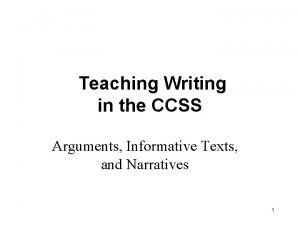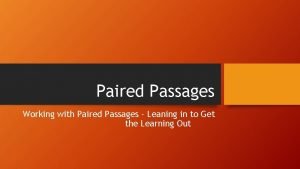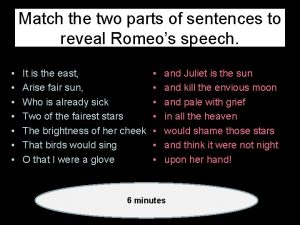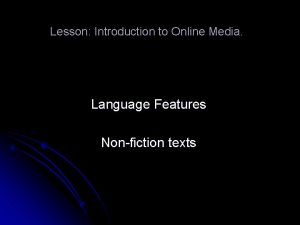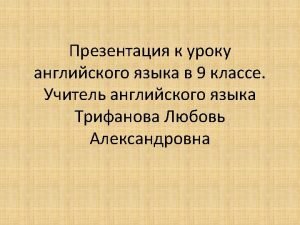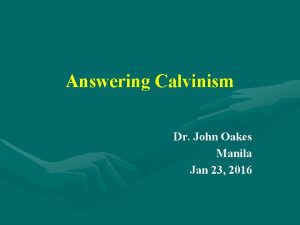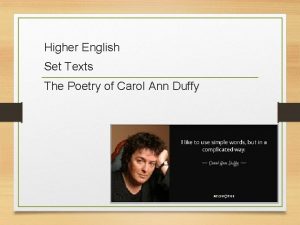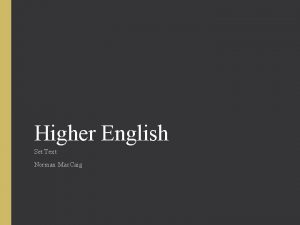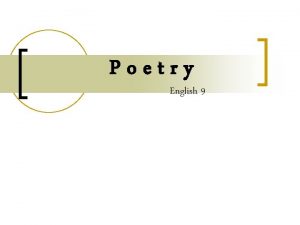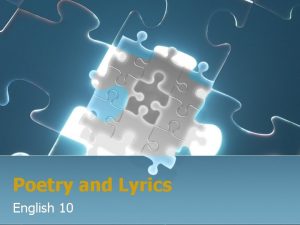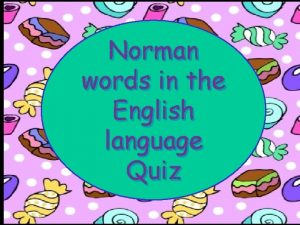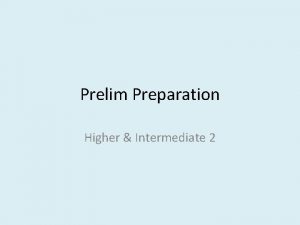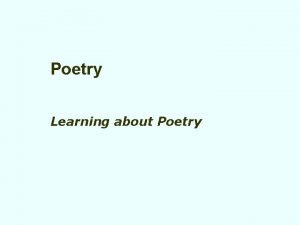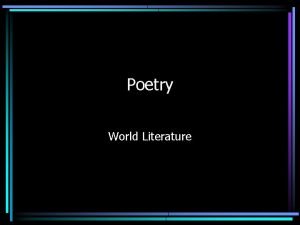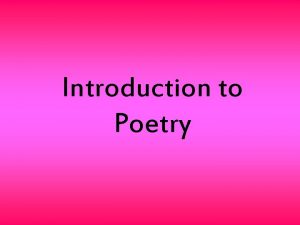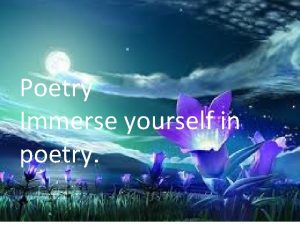Higher English Set Texts The Poetry of Norman
































































































































- Slides: 128

Higher English Set Texts The Poetry of Norman Mac. Caig

Week 1 • Recap the key ideas of the poem: • Assisi

Assisi– Norman Mac. Caig

Task 1 • Read through slides 5 -16 • Make notes about the background and key ideas of the poem “Assisi” • Answer the questions for each stanza. Use the revision booklet (annotated poems and notes) to help

Saint Francis of Assisi is a town in Italy Saint Francis of Assisi was born in Assisi - he: v Was a preacher v Had a great love of animals, birds and the poor v Was ‘Sainted’ for this reason – his help with the poor v The churches in the poem was built in honour of Saint Francis, three churches all next to one another.

Assisi is a hill town in central Italy’s Umbria region. It was the birthplace of St. Francis (1181 – 1226), one of Italy’s patron saints. The Basilica of St. Francis is a massive, 2 -level church, blessed in 1253. Its 13 th-century frescoes portraying the life of St. Francis have been attributed to Giotto.

Background • On a holiday to Assisi the poet Norman Mac. Caig went on a guided tour of the church dedicated to St Francis of Assisi. • On that tour he is struck by the contrast between the beauty of the church building and the miserable situation of a dwarf who is begging from the tourists.

Stanza 1 Analysis – The Beggar “hands on backwards” – suggests deformity or disfigurement. Simile: “like a half filled sack” - Gives the reader the image of the dwarf collapsed, floppy, hunched over and dehumanised. “tiny twisted legs” – (alliteration draws our attention and emphasises the dwarf’s legs) suggests they are lifeless, redundant. “over whom he had the advantage of not being dead yet” – the only thing going for the dwarf was not being dead – no life. Ironic no one was helping him as the church, built in honour of Saint Francis who was the patron saint of the poor – someone should have been helping him. “yet” suggests the inevitability of death, close to death.

Stanza 1 – Analysis Mac. Caig sets the scene in the first stanza – Outside a magnificent church sits a deformed man begging. Contrasts: 1) 2) rich and poor (elaborate church in contrast with the beggar) Poverty and wealth: A poor beggar sitting outside an elaborate church – built in honour of St Francis: Patron Saint of the Poor! Poverty of the poor versus the grandness of the church, ironic as Saint Francis helped the poor and they wasted money building a grand church instead of helping the poor as Saint Francis would have liked. The tone is bitter and cynical towards the church and tourists

Stanza 1 - Textual Analysis Questions 1) Explain in detail what is happening in stanza 1. 2) Analyse the simile “like a half-filled sack” What image do we get of the dwarf sitting outside of the church? 3) Identify the contrast in this stanza and explain why it is effective. 4) Who is St Francis? 5) Who had the advantage of “not being dead yet”? Analyse this quotation.

Stanza 2 Analysis – The Priest Giotto – artist who specialised in religious paintings Frescoes – paintings – biblical coverings all over the walls >>> Giotto painted these to enable the illiterate, who couldn’t read, to learn about the bible, God and Jesus. In this stanza, the priest is explaining to tourists how Giotto told the story of the goodness of God through frescoes. Condescending tone: Priest talking down to the illiterate “I understood the explanation and the cleverness” • Giotto was clever in the way he designed the frescoes • The priest was clever in his commercialisation of the church Cared more about the tourists than he did about the beggar

Stanza 2 – Textual Analysis Questions 1) Note the characteristics of the priest, justifying each point with evidence from the poem 2) What tone do you detect in this stanza? 3) How does the poet Mac. Caig feel about the situation? 4) What impression do we get of the priest in lines 10 -17. Justify your response with reference to the text. 5) What was the priest ignoring? Write about the irony.

Stanza 3 Analysis – The Tourists Extended metaphor: “clucking contentedly” – tourists are being compared to chickens which have connotations of being stupid, aimless and mindless, following each other around. “fluttered after him” – tourists followed the priest intently. “fluttered” links to chickens. “scattered the grain of the word” – priest spoke about St Francis, feeding the tourists with what they wanted to hear. “scattered” and “grain” linked to chickens. Tourists simply walked past the dwarf – “they” refers to the tourists and the priest, hypocrisy of the priest as he shouldn’t have been ignoring the dwarf – he should have been helping him in honour of St Francis (Patron Saint of the Poor!) Only interested in tourists for the money. By using the word “they” suggests Mac. Caig’s contempt at the priest and the tourists

Stanza 3 Analysis – The Tourists “ruined temple” – metaphor comparing the dwarf to a ruined temple who was once beautiful, his body is wrecked, no good anymore, beyond repair. The dwarf’s eyes “wept pus” – hopelessness, we feel sorry for him, suggests infection and dirt. “wept” suggests unhappiness, sorrow. Paints a picture in our heads the state of the dwarf, adds more detail about him from stanza 1. “said Grazie (Italian for thank-you) in a voice as sweet as a child’s when she speaks to her mother” Dwarf has inner beauty Also reinforces innocence and naiveté, vulnerability and helplessness of the beggar “or a bird’s when it spoke to St Francis” – the dwarf is sweet and beautiful inside. Links to birds speaking to St Francis as he cared for animals and the poor. The birds and the poor valued St Francis’ care.

Stanza 3 – Textual Analysis Questions A rush of tourists, clucking contentedly, fluttered after him as he scattered the grain of the Word 1) Explain fully the comparison, and what impression you think it gives of the tourists. What technique has Mac. Caig employed here? How is it effective? 2) Mac. Caig is making a statement about the apathy (uncaring or disinterested nature) of society. Quote the phrase from 18 -27 which you think best sums up this apathy. 3) Why do you think Mac. Caig calls the dwarf a “ruined temple”? Fully analyse the technique used. 4) What are the central ideas in the poem?

The theme of hypocrisy The priest of the church, in honour of St Francis should be looking after his own people, but instead he is more interested in the tourists because they will be paying money for the tour.

Extension Task • Work through the textual analysis questions in the revision booklet for Assisi • Send your answers to your teacher

Week 2 • Recap the key ideas of the poem: • Aunt Julia

Aunt Julia

Task 1 • Read through slides 19 -36 • Make notes about the background and key ideas of the poem “Aunt Julia” • Answer the questions. Use the revision booklet (annotated poems and notes) to help

Context of the poem • Norman Mac. Caig's Aunt Julia lived on Scalpay, a small island off the coast of Harris in the Outer Hebrides. • Aunt Julia lived a traditional, hardworking life on a croft and she spoke only her native Gaelic language. • Mac. Caig sometimes described himself as three quarters Gaelic – three of his grandparents were Gaels and his mother came from the same small island. • He was born and brought up in Edinburgh, however, and knew Scalpay only from visits. • He developed a deep affinity with the people, landscape and culture of Gaelic north-west Scotland from his visits there.

Representation of Aunt Julia • Julia is next depicted in a series of striking metaphors that show the young narrator connects her with elements of nature: with the earth, with water and with air. • The last stanza introduces a tone of regret before ending with a picture of the larger than life character calling to him still getting angry, getting angry/with so many questions unanswered.

Tone of Regret • The reason for this regret is that only after Julia's death did the poet learn enough Gaelic to be able to communicate with her. • Hence all the questions that he would have asked to her must now remain unanswered, just as her questions to him as a child had been.

Form and Structure • This is an autobiographical poem so it makes sense that the poet employs a first person narrative stance. • Like all Mac. Caig poetry, part of its success lies in his skill of using accessible language in an incredibly skilful and effective way. • Writing in free verse helps to create a conversational style and tone, while the use of enjambment and repetition allow him to emphasise key aspects of the poem.

Form and Structure cont. • The poem is divided into five stanzas which each deal with a specific focus: Stanza 1 – a child’s memory of his aunt / main recollection is her language – Gaelic – which he could not understand. Stanza 2 – describes his aunt and how she seemed strange to him, for example, barefoot or wearing men’s boots / his descriptions give insights into her way of life. Stanza 3 – he recalls the strange experience of sleeping in a box bed. Stanza 4 – vivid images capture aspects of her life e. g. carrying buckets of water as there is no running water. Stanza 5 – by the time he learned some Gaelic, it was too late to communica te with his Aunt: she had died.

Stanza 1 • The poem begins with a series of warmly drawn, affectionate childhood memories. • Aunt Julia speaks Gaelic very loud and very fast. The speaker states I could not answer her, I could not understand her, immediately establishing one of the main themes - frustration at barriers in communication. • However, despite this language barrier he goes onto draw a picture of a strong, capable and passionate woman who created a haven of safety and security in her house for the young boy.

Stanza 1 • Clarity and lucidity were qualities Mac. Caig constantly worked for in his poetry and they are evident in this opening stanza with its series of straightforward statements. • The poem has freshness and charm which stems from the fact it is with the eyes and ears of a child that he remembers Aunt Julia. • The repetition of I could not reinforces the idea of the barrier in communication. • However, despite this inability to understand or be understood, the tone is affectionate and emphasises that, even without a common language, strong bonds can be created. • Already in this vivid description we have the impression of Julia as a dynamic, vigorous and forceful character.

Stanza 2 • The poet begins to create a picture of a woman who lives a life close to the soil in this rural landscape. • Her work is physically demanding, both out of doors and within her house. She is often barefoot but if shod, wears practical men's boots and the poet clearly admires her completing these tasks with capability. • We see her engaged in one of the duties of her domestic life, spinning. This is a skill heavily associated with island life since Harris is famous for producing tweed.

Stanza 2 • The long line paddling with the treadle of the spinning wheel serves to accentuate the lengthiness of the spinning process and creates a sense of movement and activity which Mac. Caig also associates with his aunt. • In almost every description of her in the poem she is either in motion or speaking, emphasising the shocking silent finality of her death in the final stanza.

Stanza 2 • As he continues to recall the spinning process, the description of her right hand drew yarn/marvellously out of the air conveys the air of magic or illusion about the task which was almost entrancing for the young boy watching. • The long vowels in her hand drew yarn elongates the line and helps to convey the impression of the wool being stretched out and made taut. • The use of the present tense throughout this stanza creates a sense of immediacy and shows how vividly and readily he can still access these memories.

Stanza 3 • In stanza three we see clearly that the language barrier was surmounted by an instinctive bond between the speaker and his aunt. • As a result the young boy feels safe and secure in the dark island of the box bed in Aunt Julia’s home. It is enclosed and comforting and he vividly remembers lying in the absolute darkness listening to crickets being friendly. • Again the affection he feels for her is evident in the decision to open this stanza with the pronoun Hers, emphasising her significance to him.

Stanza 4 • In stanza four, Mac. Caig employs personification to compare his aunt both with the elements he associates with this landscape, the wind and water, and within the objects and garments that for him are most evocative of her. • She appears to him to be vivid, larger than life, and so connected with the landscape itself she becomes part of it. • The observations are those of a child, fascinated by both the curious and the ordinary. • In the poet's memory Julia becomes intertwined with the natural forces of wind and rain, in the description of the winds pouring wetly/round house-ends. At the same time he remembers her through a series of mundane domestic objects. She was buckets/and water flouncing into them and also brown eggs, black skirts/and a keeper of threepenny bits. • Again the impression conveyed is of a woman in constant motion: the transferred epithet used in the flouncing water gives a description of the deliberate, vigorous way she moved.

Stanza 4 • These metaphors seem to extend beyond merely describing Julia as an individual in order to use her as a symbol associated with, or representative of, the particular landscape, lifestyle and culture of this geographical area. • Aunt Julia, then, epitomises the specific way of life of the crofting islanders who worked the land in a harsh, unforgiving climate. • Despite the arduousness of this lifestyle, there is a pride and honesty in it, which the speaker obviously admires. Julia could even be taken to symbolise the land elements themselves in this part of the world – difficult at times, yet ultimately providing an honest, noble self-sufficient existence.

Stanza 5 • The final stanza opens by repeating the opening lines of the poem: Aunt Julia spoke Gaelic/very loud and very fast. • However a darker tone enters the poem at this point. By the time Mac. Caig had learned a little Gaelic, his aunt was dead, lying silenced in her grave. • The contrast between the loud, talkative vibrant Aunt Julia in life and the utter, absolute quiet of death is emphasised using enjambment to position silenced at the opening of line five. • The tone seems almost accusatory, as if blaming death for suffocating and stopping her voice.

Stanza 5 • This sinister, unsettling tone continues in describing the absolute black of her grave. • Unlike the comforting security of the absolute darkness of the box bed in the third stanza, the subtle shift from darkness to black conveys the frighteningly bleak void of death. • Instead of sustaining this melancholic, maudlin tone though, the speaker seems to challenge the finality of death in the line: But I hear her still, welcoming me/with a seagull’s voice She has left such a strong impression on him he can still vividly imagine her calling to him in welcome. Her voice is loud, carrying across a hundred yards and shrill like a seagull’s piercing cry. • Again, the metaphor used connects her to the natural world which played such a huge part in her life. The poem ends with the poet imagining her: getting angry, with so many questions, unanswered.

Stanza 5 • The final word is left on a line of its own, serving to reinforce the speakers enduring • The ending of the poem is somewhat ambiguous and could be interpreted in a number of ways. • The questions he alludes to could represent, literally, her questions to the boy, which he was unable to answer as he had no Gaelic, or they could represent all the questions he would have loved to ask but was unable to until it was too late. • Moving beyond the literal, the questions could represent the more universal queries we all have about the meaning and mysteries of life itself. • The repetition of the word angry in these final three lines suggests Mac. Caig is warning us to hold onto and cherish the culture and heritage of the island way of life. He is afraid if we allow it to die, like Aunt Julia, then it too will be lost forever. sense of frustration.

1. What is the effect of the structure and word choice of lines 3 and 4 in stanza 1? 2. Why is the single dash used in line 3, stanza 2? 3. How does Mac. Caig’s word choice build up his admiration for Aunt Julia in stanza 2? 4. How is this admiration / pleasant memory continued with his word choice and line structure in stanza 3? 5. Comment on the effect of the figurative language in stanza 4. 6. Why does Mac. Caig repeat the opening lines of the poem at the start of the last stanza?

7. Comment on Mac. Caig’s use of enjambment in the final stanza. 8. What technique is Mac. Caig using in lines 3 and 4 of the final stanza and what effect does this have? 9. Comment on the effectiveness of the word choice in line 5 of the final stanza. 10. What is the effect of the imagery used in line 9 of the final stanza? 11. What is significant about the structure of line 12 of the final stanza and what effect does this have? 12. What do you think Mac. Caig means by the last two lines of the poem? Comment both on word choice and structure.

Extension Task • Work through the textual analysis questions in the revision booklet for ‘Aunt Julia’ • Send your answers to your teacher

Week 3 • Recap the key ideas of the poems: • Basking Shark

Basking Shark

Task 1 • Read through slides 43 - 52 • Make notes about the background and key ideas of the poem “Basking Shark” • Answer the questions. Use the revision booklet (annotated poems and notes) to help

Context Norman Mac. Caig divided his time mainly between Edinburgh, where he lived and worked, and the northwest Highlands, where he had relations and friends. This poem depicts the startling encounter he had with a basking shark during one of these visits, while out on a small boat in the Minch (the sea area between the Hebrides and mainland Scotland) near Lochinver.

Basking sharks are one of the largest species of the shark family, in fact they are the second largest species of any fish, reaching sizes in excess of ten metres and weighing several tonnes. They are still found, though reduced in number, in the seas off that part of Scotland. They are harmless filter feeders, having no true teeth, and as such pose no real danger to humans. Still, a surprise close encounter with a creature of that size would be unnerving! Particularly if close enough to touch the oars of a small boat, as happened to Mac. Caig.

This encounter sparked in him a reflection on the comparative paths of evolution such differing species took: basking sharks on the one hand, relatively unchanged for millions of years, and humans on the other, vastly changed since the days when marine life first crawled ashore and adapted to a life on land. This train of thought leads to a disturbing question: who is the monster? Is it the shark, literally monstrous in size and aspect to the human; or is it the poet himself, representative of the human race and all the dark, monstrous deeds of which our race is capable? The thought remains with the poet, unresolved, as the shark swims off.

“That roomsized monster with a matchbox brain. ” Contrast – ‘roomsized monster’ and ‘matchbox brain’ Contrasts size of shark’s body with tiny brain The linking alliterative consonant ‘m’ serves to further emphasise the comparison Clever use of long and short vowels in this final line: the long vowels in ‘roomsized monster’ appropriately extend the expression to suit the body, as the short, clipped vowels of ‘matchbox brain’ suit the tiny brain

“Shook on a wrong branch of his family tree. ” Mac. Caig is emotionally shaken by this experience because he is reminded that this shark too is part of our own family tree and is inextricably linked to us in the same way as any other ancestor. The expression ‘wrong branch’ is slightly ambiguous and could be interpreted in two ways: 1. Because of our inherent sense of intellectual superiority over this creature we are unwilling to recognise that we are in any way related. 2. It is in fact humans who have gone ‘wrong’ in their evolutionary path – it is humankind, not the shark who is the aberration, the ‘monster’.

In his mind’s eye Mac. Caig has a surreal image of himself crawling out of this slime and returning to the initial, fundamental beginnings of human existence. The word ‘emerging’ in the final line of this stanza reinforces this new, almost sense of epiphany and clarity associated with coming out of the dark into light, while the word ‘everything’ again reinforces our similarity with every other species at the start of this process.

The change in the speaker’s view of the shark is mirrored in the change in the speaker - just as he now has a different view of himself, so too his opinion about the shark has been altered. The unanswered question at the end of this poem is typical of what is often described as Mac. Caig's metaphysical approach. His hair-raisingly close encounter with this monster of the deep has raised profound philosophical questions about our ethics and our place in the natural world. Mac. Caig avoids the temptation to conclude this meditation with an easy or glib answer, instead inviting his reader to draw their own conclusions.

Form and Structure • This poem is set out in five stanzas, each of three lines, and each line being end-rhymed with the others in the stanza. The meter of the poem is also fairly regular: the first two lines of each stanza have five stressed syllables, while the final one has four. The effect of the final shorter stressed line is to create a sense of fitting closure to the stanza. • This tight regularity of form is quite unusual in Mac. Caig’s poetry. He is often quite free in stanza length, line length, and meter, and rhyming may or may not be present; he will vary his style according to the requirements of a particular poem. In this poem the tightness of structure serves to capture the uniqueness of the experience, and the regularity of rhythm and rhyme matches the rhythmic quality of the rise and the fall of the sea itself, and likewise the steady pulling of the oars. • The subject of the poem is never mentioned in the body of the poem itself, instead we infer from the title what the poet's small boat collided with that day.

Themes • Evolution • The hedonism/monstrous nature of humanity • Admiration of nature • The central theme that emerges during this poem deals with our accepted ideas about the process of evolution and our own place in it. • The encounter with this enormous, almost primeval, beast at the opening of the poem acts as a catalyst to consider the relationship between the shark and human beings. • Through the reflection of the speaker, we are reminded that we have much more in common with the shark than we may initially believe, and by rewinding time back to the origins of evolution itself he creates a direct link between it and us. • In doing so, he forces us to think about what we understand when we think of the term ‘monster’, suggesting that it is humanity and not creatures like the shark that are capable of true monstrosity.

An overview of the stanzas • Stanza One – Mac. Caig describes the chance meeting with the shark and makes it clear it has happened before. • Stanza Two – the meetings have had an effect on him and he thinks back to one particular meeting. • Stanza Three – he begins to question his position in the evolutionary process. • Stanza Four – explains how indistinct humans were from other species at the beginning of the evolutionary process. • Stanza Five – his opinion of the shark changes and the poet reveals that he is not so sure of his own superiority over the rest of nature.

Questions 1. With reference to language, show the opening line effectively reveals the setting of the poem. (2) 2. What happens in the opening stanza? (1) 3. The speaker has a mixture of feelings towards the shark. By close examination of language of lines 2 -6, show what these feelings are, and how they are revealed. (4) 4. Comment on the sound and visual effect of “a sea tin -tacked with rain” (2) 5. Comment on the humour in line 6 (2)

6. With close reference to language, how does Mac. Caig develop the idea of ‘He displaced more than water’ in the rest of the stanza (stanza 3) and how does this further develop the idea of the evolutionary process (2) 7. What has the shark displaced more than water? (1) 8. ‘Shook on the wrong Branch of the family tree’ (line 7) What connection does the poet make between himself and the shark (2) 9. Explain what is meant by the image: ‘Swish up the dirt and, when it settles, a spring Is all the clearer. ’ (2)

10. Comment on the sound and word choice of the final two lines and say how they help to get across the poet’s purpose in the last description of the shark. (4) 11 The encounter with the shark caused the poet to reflect upon some big ideas. Comment on two phrases which suggest the poet reflected upon serious issues. (4) 12. With reference to the poem’s structure (rhyme scheme, no. of stanzas, syllables in a line etc…) and punctuation, explain how these elements added to your overall understanding/enjoyment of the poem. (4)

Extension Task • Work through the textual analysis questions in the revision booklet for ‘Basking Shark’ • Send your answers to your teacher

Week 4 • Recap the key ideas of the poems: • Visiting Hour

Visiting Hour

Task 1 • Read through slides 60 - 74 • Make notes about the background and key ideas of the poem “Visiting Hour” • Answer the questions. Use the revision booklet (annotated poems and notes) to help

Key • Imagery (metaphor/simile/word choice) • Synecdoche • Sentence Structure • Synaesthesia • Theme

Starter • What are your first impressions of the poem? • How does it make you feel? • Can you relate the poem to your own personal experiences?

Summary • Summarise the poem in a short paragraph. Include the key events and who is involved. This will help you with the commonality aspect.

Form and Structure Imagery Synecdoche Sentence Structure Synaesthesia Theme • The poem is written in first person. • It is a stream of consciousness poem, allowing the reader to experience emotions the writer is experiencing. • It is written in chronological order and the present tense, almost representative of the transition from life to death.

The overall structure of the poem contributes to the atmosphere and mood • Stanzas 1 -3 are short, staccato and create a sense Stanzas 1 -3 of place, atmosphere and the poet’s feelings • Stanza 4 – sense of busy hospital Stanza 4 • Stanza 5 – main action, sense of hush in the Stanza 5 presence of dying woman. • Stanza 6 – opening of floodgates of poet’s Stanza 6 emotions in face of his inevitable loss.

Stanza One • • - Imagery Synecdoche Sentence Structure Synaesthesia Theme ‘The Hospital smell/combs my nostrils’ Metaphor Highlights strength of the smell in the air Reminds us of hospital smell ‘bobbing along the corridors’ Synecdoche (using part of something to refer to whole so uses nostrils to refer to whole body) - ‘bobbing’ has positive connotations – makes us think the smell won’t be as bad as speaker initially thinks.

Stanza One Imagery Synecdoche Sentence Structure Synaesthesia Theme • ‘green’ and ‘yellow’: - Word choice - Connotations of sickness and illness witnessed in hospitals and the awful experiences people can have. - It is clear that senses are forcing the speaker to push his emotions aside.

Stanza Two • - Imagery Synecdoche Sentence Structure Synaesthesia Theme ‘vanishes/heavenward’ Metaphor Dead body going into lift – theme of mortality Symbolic of journey to heaven ‘heavenward’ = enjambment (continuation of idea on its own line). Body in lift symbolises body’s journey to heaven. Word is isolated reminding us of isolation of death.

Stanza Three Imagery Synecdoche Sentence Structure Synaesthesia Theme • ‘I will not feel’ = repetition. - Speaker does not want his emotions to overpower him. - Seems incapable of handling situation as this whole journey is so painful. - Think of a time you have had to remain composed and how hard it may have been – the speaker is in the exact same situation. - ‘feel’ = enjambment. Speaker wants to remain composed.

Stanza Four Imagery Synecdoche Sentence Structure Synaesthesia Theme • Adverbs ‘lightly’ and ‘swiftly’ – suggests almost carefree movement. • ‘here and up and down and there’ – word order/inversion suggests all over the place, constantly on the move. • ‘burden’, ‘slender’ – suggests shock of speaker at nurse’s ability to carry weight of all of this. • ‘so much pain, so/many deaths’ and ‘so many farewells’ – structure emphasises strain of job. Speaker cannot believe ability of nurses when there is so much pain and death surrounding them.

Stanza Five Imagery Synecdoche Sentence Structure Synaesthesia Theme • ‘Ward 7. ’ = short sentence/caesura (a pause that breaks up a line of verse). Reality now hits speaker and cannot escape possibility of death. Speaker has arrived at the destination. TURNING POINT. Must confront situation that he clearly has wanted to avoid. • ‘white cave of forgetfulness’ – Metaphor. Reveals patient’s isolation. • ‘withered’ and ‘trembles’ – word choice – comparison of body to dying flower. Connotations of being brittle/frail. However, flowers die and go to seed so the poet believes that there is some possibility of an afterlife.

Stanza Five Imagery Synecdoche Sentence Structure Synaesthesia Theme • ‘its’ – dehumanises woman. Links to cave idea previously. • ‘glass fang’ – describes how frightened speaker is by the medical equipment. Needle is ‘not guzzling but giving’ therefore contradicts vampire imagery. The speaker may feel that the medical equipment isn’t actually helping. • Alliteration of ‘g’ – harsh sound and sense of bitterness from speaker.

Stanza Six Imagery Synecdoche Sentence Structure Synaesthesia Theme • ‘black figure in her white cave’ contrast between alive and dead body. • Black stands out against white, showing patient is weak. • ‘swimming waves’ – synaesthesia (where one sense can cause a reaction in another) highlights poet being overwhelmed by bell. Signifies end of the visiting hour. Connotations of being the last time he will see the patient.

Stanza Six Imagery Synecdoche Sentence Structure Synaesthesia Theme • ‘dizziness’ and ‘clumsily rises’ – word choice – grief is reinforced. • ‘fruitless fruits’ – oxymoron – pointless gifts/negative connotations. The books will remain unread and the food will remain uneaten. Hopelessness of situation.

Themes Imagery Synecdoche Sentence Structure Synaesthesia Theme • Death/Mortality • Isolation • Humanity/Human reactions (fear of emotions)/Nature of existence – transition of our existence from life to death which encourages us to consider how to appreciate life before the inevitability of death.

1. Comment on the word choice used in line 4 of the opening verse. Why is it effective? 2. Comment on the poet’s use of structure in lines 8 -10. Why is it effective? 3. a) Look at verse 5 (lines 19 -30) Identify two pieces of two imagery used by Mac. Caig and comment on its effectiveness. b) Identify one effective use of structure in this verse and explain what effect it has on your reading. 4. Reread verse 6. Select any example of word choice or imagery and explain in what way it helps to tell us about the speaker’s emotions. 5. a) What do you consider to be two of the main ideas of the poem? b) Select two different quotes from the poem that support this idea and explain how they are effective in supporting the main idea.

6. Look at the poem as a whole. Show the tone changes throughout the poem. (2) 7. Look at stanza three. Show the poet achieves a sense of vulnerability. (2) 8. Look at stanza four. Show the poet achieves a sense of emotional disconnection. (2) 9. Look at stanza five. Show the poet creates a sense of both positivity and negativity. (2) 10. Look at stanza six. Comment on the effectiveness of this as a conclusion to the poem. (2)

Extension Task • Work through the textual analysis questions in the revision booklet for ‘Visiting Hour’ • Send your answers to your teacher

Week 5 • Recap the key ideas of the poems: • Brooklyn Cop

Brooklyn Cop

Task 1 • Read through slides 81 - 87 • Make notes about the background and key ideas of the poem “Brooklyn Cop” • Answer the questions. Use the revision booklet (annotated poems and notes) to help

Background • The poem, written in 1968, is based on an experience that Mac. Caig had in America. • Brooklyn is a rough district in New York. • Hieroglyphs are sacred symbols used in Egyptian picture writing, but these are now sometimes referred to as things which are difficult to read. • Nightstick is an American policeman’s truncheon.

The poem … • Mac. Caig describes • the physical appearance of a character from an urban environment. • The character’s psychological profile. • The character’s urban environment. • He writes about the character’s dangerous existence and the violent situations he finds himself embroiled in. • He also suggests that the character is just as dangerous as the criminal?

Emotions in the poem… • Policeman’s emotions created by the danger and tension of his job. • He is a frightening character, but he has to be to survive the terrors of city life. • Is sympathy felt for both the policeman and his victims? • How does Mac. Caig feel about the use of violence to prevent violence and uphold the law? Irony?

Stanza 1 Summary • Describes physical appearance of the cop • Brutish, powerful, aggressive • Suggests a psychological description by reference to home-life and concerns. • Heavy contrast between tough public exterior and domestic, private side of the cop.

Stanza 2 Summary • Extends the tissue metaphor and explores the results of tearing the tissue – exploration of the urban environment • ‘Plunge’ – key word, suggests impulsive and reckless aspects of the cop- instigator? • Names of establishments sound sleazy- suggests lack of dignity.

Stanza 3 Summary • Tone changes and moves from descriptive commentary to reflective. • Again gorilla metaphor is extended. • “Home” literal and metaphorical meaning. He might not get home or he might lose his humanity through his constant involvement with violence.

Stanza 4 Summary • Reflective tone continues • Suspects/criminals referred to as victims – key to the meaning of the whole poem. • Irony of use of violence in preventing violence. • Pessimistic tone?

Questions 1. Where is this poem set? 2. What are the connotations (the implied meaning) of green and yellow? 3. 4. 5. 6. Why does the poet use the word “corpse”? What is the effect of the word “vanishes”? What does the word “heavenward” suggest? Why does the poet repeat the expression “I will not feel” throughout the third stanza? 7. How do you think the poet feels about the nurses? Explain why.

Questions 8. Which word is repeated throughout the fourth stanza? 9. Why does the poet use a minor sentence (a sentence which does not contain a verb) to begin stanza 5? 10. There are three metaphors in stanza five can you identify and explain them? 11. Which two figures could the patient be smiling at? 12. From whose point of view are we seeing things in this stanza? 13. Who do you think is “growing fainter” in this stanza? 14. How do you think the poet is feeling by the end of the poem?

Extension Task • Work through the textual analysis questions in the revision booklet for ‘Brooklyn Cop’ • Send your answers to your teacher

Week 6 • Recap the key ideas of the poems: • Hotel Room 12 th Floor

th Hotel Room 12 Floor

Task 1 • Read through slides 94 -99 • Make notes about the background and key ideas of the poem “Hotel Room 12 th Floor” • Answer the questions. Use the revision booklet (annotated poems and notes) to help

Recap Reading 1. Make a list of the American words/terms. Can they be split into two categories? 2. What is the setting of the poem? Is it in any way significant or symbolic? 3. How much time passes between the beginning and the end of the poem? 4. What is the poet actually doing in the first and second verse? Which senses does he utilise?

Form and Structure • Consisting of three stanzas of varying length, Hotel Room, 12 th Floor does not have a rhyming scheme. Stanza One reflects how the city looks in the morning and focuses on the bright, modern appearance of the city. • Mac. Caig moves to night at the close of the stanza to suggest a darker, more dangerous city. • Stanza Two explores this threatening night world in more detail and links it to the Wild West. • The shortest of the stanzas, Stanza Three is an effective summary of the poem's themes, bringing together societal concerns. By giving the two sentences that comprise stanza three a stanza of their own, Mac. Caig gives significance to their content.

Stanza 1 • Mac. Caig opens the poem at a specific time, just as the title puts us in a specific place. Together with the use of real landmarks, this makes the poem feel like a genuine, real experience. This creates a sense of immediacy that is consolidated later in the opening stanza with But now. With these two quotes, he suggests that themes of the poem need to be discussed and are relevant to the time of writing • Mac. Caig ends the stanza suggesting that shots are being fired upwards, just as the skyscrapers point up to the sky. However in Stanza Two he goes on to suggest that violence is occurring elsewhere, down in the streets below. Acrosses, with its inclusion of the word “cross” carries a religious connotation. The image suggests the Western Christian image of good fighting evil and darkness.

Stanza 2 • Stanza Two begins with Mac. Caig consolidating a pessimistic tone. The repeat of But at the start of the sentence links back to and emphasises the “but” used as turning point in Stanza One. This continues the image of battle between good and evil. In this stanza, an extended metaphor portrays the violence of the city as a fight in the Wild West. • Mac. Caig states that the harsh screaming emits from coldwater flats. This literally refers to the less luxurious, more primitive flats, and Mac. Caig is making a broader point here: technological advances are not benefitting all (think about the flats that don’t have hot water, and the contrast between them and the illustrious, imposing skyscrapers) and certain elements of society have been left behind in the pursuit of materialism. The destitute nature of living for some then translates to the streets. The skyscrapers may be glazed with windows but the sidewalk is glazed with blood.

Stanza 3 • Mac. Caig closes the poem in a stanza comprised of two sentences. Each makes a negative statement and they leave us with a pessimistic tone. • Like the Empire State Building, or the city, a frontier is often an artificial construct. In the Wild West, a frontier was often used to describe a border between societies, most commonly between those that were considered to be civilised and those that were not. Mac. Caig may be suggesting here that uncivilised acts are intrinsically linked to all human societies. By saying that the frontier is never somewhere else, Mac. Caig suggests that we see as uncivilised is always with us, always a part of us.

Themes – civilisation vs. savagery • The civilisation of the poem is depicted by images of technology and progress in stanza one. But this civilisation seems to be on the surface only, suggested by it being visible across the skyline. On the street level, violence and savagery pervades, which is shown in stanza two, with the violence reaching its peak with ‘blood glazed on sidewalks. ’ The savagery is linked to the natural world (‘canyons…gulches’), that of the Native American, who was usurped from his land by the white, progressive settlers. The frontier referred to in stanza three would have a very precise meaning to Americans. In the eighteenth and nineteenth, settlements in America were along the east coast, but began to move westward, taking more land from Indian tribes. The process was seen as part of the advancement of civilisation, and the Natives were regarded as savages. Mac. Caig, at the end of the poem, seems to be saying that the boundary between civilisation and savagery is not a line on a map, but exists in us all. We have the potential to be savages, allowing the ‘mignight’ to take us over. Nothing that our sophisticated modern society can construct is capable of overcoming the power for evil and destruction which exists in humna beings.

In More Detail. . . 1. “This morning I watched from here” a) What time of day is mentioned? 3. Quote another image which the poet uses in lines 1 – 5 and explain how this helps to create a negative, uneasy tone to the poem b) What tense does the writer use? 2. “skirting, like a damaged insect” 4. Re-read lines 5 -9: the image is of darkness being held at bay by light. Explain how the simile above helps you to picture: a) Quote a phrase that shows this. The way the helicopter moves The sound the helicopter would make b) Explain in your own words what you think the poet means by the phrase “uncivilised darkness”

Questions 5. Look at lines 10 – 15. a) Quote two examples of things the poet 7. “The frontier is never can hear and explain what is making somewhere else. And no stockades those sounds can keep the midnight out” b) “Chose one of the two words or phrases you quoted for answer 4 a and Explain, in your own words, what you explain how it helps you to imagine what think the writer means by this is going on outside on the streets 6. “the glittering canyons and gulches” (line 14) 8. Think about the poem as a whole. How effectively do you think the poet uses Identify two contrasting words or images contrasting images to suggest to the in the line above reader that no matter how technologically Explain why you think the poet chose to advanced we may become, we are still at include this contrast and how effectively heart savages? Include evidence from the poem in your answer. you think he uses it

Make notes on… 1. How does Mac. Caig create a sense of menace in the opening stanza? Quote and comment on at least three examples of word choice and imagery in your answer. 2. Look again at the two references to “midnight” in the poem. What do you think this is supposed to represent? Explain how you arrived at your answer. 3. How does the poet create an atmosphere of violence in stanza two? Refer to at least 3 examples in your analysis. 4. The poet uses an extended metaphor to describe New York in this poem. What does he compare New York to? Quote examples that create this extended metaphor and explain why this comparison is effective. 5. What do you think the poet’s final message is in the closing three lines?

Extension Task • Work through the textual analysis questions in the revision booklet for ‘Hotel Room 12 th Floor • Send your answers to your teacher

Week 7 and 8 • Recap some key themes • 10 mark Q structure

There a variety of elements to Mac. Caig’s poetry. ü Theme of isolation ü Theme of loss and grief ü Theme of lack of communication ü Deeply emotional situations ü Human experiences Can you link each of Mac. Caig’s poems to one or more of these elements and ü Personal experience themes? ü Nature ü Theme of death ü Observation of people or places ü Contrast

’ a i l u ‘ J t n Au p’ o C yn l ok o r ‘B g n iti s i ‘V H ’ r u o k s a B ‘ r’ o o th Fl 2 1 m o t o ‘H o R l e ’ k r a h S g n i ‘A i’ s i ss

Mac. Caig’s Creation of Mood in his Poetry has the power to evoke emotions and feelings in its readers and audience members, if it is read out loud. These emotions and feelings help establish a certain atmosphere or mood. The writer of the poem creates the mood using a number of elements such as language, setting, tone and theme. To define the mood of a poem, the reader should analyse how these different elements interact and what feeling or atmosphere they evoke. ‘Aunt Julia’ is a poem where a variety of moods are prevalent. ü Can you identify the different moods in the poem?

Mac. Caig’s Creation of Mood in his Poetry Stanza 1: “Aunt Julia spoke Gaelic very louds and very fast. Repetition creates a mood of frustration I could not answer her – I could not understand her. ” Stanza 2: “while her right hand drew yarn marvellously out of the air” Word choice creates a mood of awe, wonder, and fondness of his Aunt. Stanza 3: “Hers was the only house where I’ve lain at night in the absolute darkness of a box bed, listening to crickets being friendly. ” Contrast is used here to emphasise the mood of happiness and content.

Mac. Caig’s Creation of Mood in his Poetry Stanza 4: “She was buckets and water flouncing into them. She was winds pouring wetly Again, a mood of awe and wonder is created through Mac. Caig’s use of language: ü Imagery (succession of metaphors) round house ends. ü Repetition (she was) She was brown eggs, black skirts ü Listing (emphasises the amount of things she was and a keeper of threepennybits able to do) in a teapot. ”

Mac. Caig’s Creation of Mood in his Poetry Stanza 6: “Aunt Julia spoke Gaelic very loud and very fast Repetition creates a mood of frustration By the time I had learned a little, she lay “by the time I had learned a little silences in the absolute black she lay silenced…” “black” “grave” of a sandy grave creates a mood and sense of at Luskentyre. But I hear her still, welcoming me Word choice creates a regret nostalgic with a seagull’s voice mood of fondness for his across a hundred yards Aunt. Repetition is used here again to of peatscrapes and lazybeds create a mood of guilt and frustration that he was and getting angry, getting angry never able with so many questions to communicate with his Aunt. “Unanswered questions” highlights unanswered. ” the mood of regret.

The Last Question (10 marks) Look at the hand out of the set text specimen. The paper is broken down as follows: There will be four questions. The first three questions will be textual analysis style questions on one of the set texts that will be given to you. Two 4 mark questions (So, two quotes and two sets of analysis per question) One 2 mark question (So, one quote and one set of analysis) Your last question will be worth 10 marks, taken from one or more of Mac. Caig’s other poems although you should refer to the poem given and discuss how it connects to Mac. Caig’s other poems (‘one or more’ /‘at least one’) v 2 marks for identifying a commonality (theme etc in ref to the question) v 2 marks from poem given (quote and analysis) v 6 marks for referring to Mac. Caig’s other poems (“one or more/at least one”) Could be two quotes from one of Mac. Caig’s other poems and one quote from a third, or all three from one.

Answer Structure • • • 2 marks for “commonality” • • • 2 marks for dealing with poem given • • • 6 marks for dealing with other texts Statement about first text which describes how it fits the question Statement about the other text(s) which describes how they fit the question 2 x reference and comment 0 marks reference only/ 1 mark per reference and comment/ 2 marks for extensive comment 6 x reference and comment 0 marks reference only/ 1 mark per reference and comment/ 2 marks for extensive comment

Commonality • In “Visiting Hour” Mac. Caig explores theme of loss as the speaker describes his feelings of hoplessness and despair about losing a loved one in a hospital ward where he is unable to help. • In “Aunt Julia” Mac. Caig explores a theme of loss as he feels frustration at the loss of an Aunt he never really got to know before she died.

Exam Poem • “A withered hand trembles on its stalk” • Metaphor compares the patients hand to a dying plant • Just as a dying plant will wither and start to waste away and become weak so it the patient becoming weak and fading away as they become close to death. • This illustrates theme of loss and the speaker is clearly upset and effected by the fact that this loved one is dying before their eyes. • Repeat x 1

Other Poems • • • 6 marks for dealing with other texts • • • Aunt Julia • Word choice of “absolute black” suggests the end of something and that there is no going back, darkness and negativity. This illustrates his feeling of loss by summing up the finality of her death and illustrating his regret and disappointment that he will never be able to speak to her again. • Repeat x 5 6 x reference and comment 0 marks reference only/ 1 mark per reference and comment/ 2 marks for extensive comment “silenced in the absolute black of a sandy grave” Word choice of “silenced” has connotations of somebody intervening and preventing further communication which highlights the speaker’s loss as he feels angry that he has been prevented from hearing her story from her own lips.

Question • Discuss how the poet uses striking words and imagery to explore a deeper theme in “Visiting Hour” and at least 1 other Mac. Caig poem.

My Answer General Comment • In “Visiting Hour”, Mac. Caig uses striking imagery such as the description of the smell of the hospital and the comparison of the illness to a cave to illustrate theme of loss • In “Aunt Julia”, Mac. Caig uses the imagery of memories of his aunt and his sadness that she is dead to illustrate theme of loss. • In “Brooklyn Cop”, Mac. Caig uses the imagery of the cop as a gorilla and the potential for him to be dangerous to highlight theme of good vs. bad

Exam Poem “The hospital smell/combs my nostrils” • This metaphor compares smell to a comb brushing through the poet’s nose and shows the power of the smell. Just as a comb would pass through the strands of hair so too the smell touches every part of the speaker’s nose. The creates the effect of emphasising the fact that he cannot escape the smell. This illustrates theme of loss as it clearly emphasises how much he dislikes this location and cannot escape how negative it is. “white cave of forgetfulness” • This metaphor compares ……………. to …………………. . and shows …………………………. Just as a ……………. . so too ………………………. . The creates the effect of ………………………. . . This illustrates theme of …………………. as it clearly emphasises …………………………….

Other Poem "But I hear her still, welcoming me/with a seagull’s voice” • This metaphor compares ……………. to …………………. . and shows …………………………. Just as a ……………. . so too ………………………. . The creates the effect of ………………………. . . This illustrates theme of …………………. as it clearly emphasises ……………………………. “the absolute darkness” • This metaphor compares ……………. to …………………. . and shows …………………………. Just as a ……………. . so too ………………………. . The creates the effect of ………………………. . . This illustrates theme of …………………. as it clearly emphasises …………………………….

Other Poem “getting angry, with so many questions, unanswered ” • This striking word choice of tells the reader ……………. … ……………. . The word choice of “………………. . ” suggests…………………………. The use of repetition creates the effect of ………………………. . . This illustrates theme of …………………. as it clearly emphasises ……………………………. “Built like a gorilla but less timid, thick fleshed, steak coloured” • This simile compares ……………. to …………………. . and shows …………………………. Just as a ……………. . so too ………………………. . The creates the effect of ………………………. . . This illustrates theme of …………………. as it clearly emphasises …………………………….

Other Poem “Who would be him, gorilla with a nightstick? ” • This metaphor compares ……………. to …………………. . and shows …………………………. Just as a ……………. . so too ………………………. . The creates the effect of ………………………. . . The use of rhetorical question creates the effect of ………………………. . . This illustrates theme of …………………. as it clearly emphasises ……………………………. “He is a gorilla to whom “Hiya, honey” is no cliche” • This metaphor compares ……………. to …………………. . and shows …………………………. Just as a ……………. . so too ………………………. . The creates the effect of ………………………. . . This illustrates theme of …………………. as it clearly emphasises …………………………….

Try one of your own • ‘Aunt Julia’ – by referring to this poem and to at least one other by Norman Mac. Caig, discuss his exploration of deeply emotional situation.

Week 9 • Attempt a timed 10 mark question • Create a revision poster for each poem

Poem Summary Brooklyn cop Mac. Caig portrays the imposing presence of a New York policeman. In doing so, Mac. Caig considers the fragile nature of society and the challenges that it can pose. Hotel Room 12 th From his hotel room in New York during a trip in the mid. Floor sixties, Mac. Caig considers the nature of society, and whether it has come as far as its technological advances would suggest. Basking Shark This poem compares the evolutionary paths of basking sharks and humans. The sharks’ lives remain relatively unchanged for millions of years, but humans lead vastly changed lives. Aunt Julia This poem evokes Norman Mac. Caig's warm memories of his Aunt Julia. She lived in a croft on a small island in the Outer Hebrides, speaking no English, only her native Gaelic language. Assisi Norman Mac. Caig's poem describes a visit to the Basilica of St. Francis of Assisi. The basilica's role as a landmark is contrasted with the Christian ideals behind its construction. Visiting Hour describes a visit to someone who is dying in

Timed 10 mark Q • By referring to this poem (Assisi) and at least one other by Mac. Caig, discuss theme of isolation.

The Last Question (10 marks!) You will be asked about thematic connections in Mac. Caig’s work: Usually: ü Themes (loss, grief, death) - Visiting Hour - Aunt Julia ü ü Personal Experience (All) ü - Nature Imagery Observation (All except ‘AJ’) Isolation (All) People or Places (All) ü Contrast - Assisi (dwarf and church, poverty and wealth. ü Sounds to highlight Mac. Caig’s grief. Positive vrs negative. ) - Basking Shark (Mac. Caig comparing himself to the shark – Is he superior? ) “matchbox brain – room sized monster”. - Aunt Julia (“crickets being friendly” in contrast to the dark room to emphasise his comfort at Aunt Julia’s. ) Aunt Julia (outdoors, eggs, winds) Assisi (extended metaphor – hens) Basking Shark (shark, rain on the sea, “slime of everything”)

Poster You are going to make a poster focusing on what you have learnt about each of the 6 poems by Norman Mac. Caig. You must include things like: • Themes • Quotes • analysis What makes a good poster? q Bold title q Striking images q Clear handwriting

Revision • Complete the remaining tasks in the revision booklet • Ask your teacher if you have any questions
 Total set awareness set consideration set
Total set awareness set consideration set Training set validation set test set
Training set validation set test set Nea prohibited texts
Nea prohibited texts Text types in english
Text types in english An approach to english translation of islamic texts
An approach to english translation of islamic texts Basking shark textual analysis
Basking shark textual analysis Bounded set vs centered set
Bounded set vs centered set Crisp set vs fuzzy set
Crisp set vs fuzzy set Crisp set vs fuzzy set
Crisp set vs fuzzy set Crisp set vs fuzzy set
Crisp set vs fuzzy set What is the overlap of data set 1 and data set 2?
What is the overlap of data set 1 and data set 2? Correspondence function examples
Correspondence function examples Sqa higher english understanding standards
Sqa higher english understanding standards Higher english 10 mark question duffy
Higher english 10 mark question duffy The red door by iain crichton smith
The red door by iain crichton smith How to answer a link question in higher english
How to answer a link question in higher english Ruae question types
Ruae question types Ruae higher english
Ruae higher english Apostrophe (figure of speech)
Apostrophe (figure of speech) The way my mother speaks carol ann duffy
The way my mother speaks carol ann duffy Dissertation advanced higher english
Dissertation advanced higher english Advanced higher english understanding standards
Advanced higher english understanding standards Ruae meaning
Ruae meaning Ib english higher level
Ib english higher level How to answer word choice questions higher english
How to answer word choice questions higher english A text book of higher english grammar
A text book of higher english grammar Advanced higher english literary study
Advanced higher english literary study Higher art understanding standards
Higher art understanding standards Higher modern studies understanding standards
Higher modern studies understanding standards Higher english ruae question types
Higher english ruae question types Higher english folio
Higher english folio How to answer ruae questions higher english
How to answer ruae questions higher english Higher english close reading
Higher english close reading Advanced higher mathematics of mechanics
Advanced higher mathematics of mechanics Effective conclusion higher english ruae
Effective conclusion higher english ruae Ruae techniques
Ruae techniques Aunt julia higher english
Aunt julia higher english Ruae higher english
Ruae higher english Imagery higher english
Imagery higher english Ruae
Ruae Selling manhattan carol ann duffy analysis
Selling manhattan carol ann duffy analysis Advanced higher english dissertation word limit
Advanced higher english dissertation word limit Neoclassical poetry vs romantic poetry
Neoclassical poetry vs romantic poetry Traditional poetry vs modern poetry
Traditional poetry vs modern poetry It is a poem which is comparatively short
It is a poem which is comparatively short Augustan age characteristics
Augustan age characteristics Poetry poetry
Poetry poetry Hát kết hợp bộ gõ cơ thể
Hát kết hợp bộ gõ cơ thể Frameset trong html5
Frameset trong html5 Bổ thể
Bổ thể Tỉ lệ cơ thể trẻ em
Tỉ lệ cơ thể trẻ em Voi kéo gỗ như thế nào
Voi kéo gỗ như thế nào Tư thế worms-breton
Tư thế worms-breton Chúa yêu trần thế
Chúa yêu trần thế Các môn thể thao bắt đầu bằng tiếng nhảy
Các môn thể thao bắt đầu bằng tiếng nhảy Thế nào là hệ số cao nhất
Thế nào là hệ số cao nhất Các châu lục và đại dương trên thế giới
Các châu lục và đại dương trên thế giới Công của trọng lực
Công của trọng lực Trời xanh đây là của chúng ta thể thơ
Trời xanh đây là của chúng ta thể thơ Mật thư tọa độ 5x5
Mật thư tọa độ 5x5 Phép trừ bù
Phép trừ bù độ dài liên kết
độ dài liên kết Các châu lục và đại dương trên thế giới
Các châu lục và đại dương trên thế giới Thơ thất ngôn tứ tuyệt đường luật
Thơ thất ngôn tứ tuyệt đường luật Quá trình desamine hóa có thể tạo ra
Quá trình desamine hóa có thể tạo ra Một số thể thơ truyền thống
Một số thể thơ truyền thống Cái miệng nó xinh thế
Cái miệng nó xinh thế Vẽ hình chiếu vuông góc của vật thể sau
Vẽ hình chiếu vuông góc của vật thể sau Thế nào là sự mỏi cơ
Thế nào là sự mỏi cơ đặc điểm cơ thể của người tối cổ
đặc điểm cơ thể của người tối cổ Thứ tự các dấu thăng giáng ở hóa biểu
Thứ tự các dấu thăng giáng ở hóa biểu Vẽ hình chiếu đứng bằng cạnh của vật thể
Vẽ hình chiếu đứng bằng cạnh của vật thể Tia chieu sa te
Tia chieu sa te Thẻ vin
Thẻ vin đại từ thay thế
đại từ thay thế điện thế nghỉ
điện thế nghỉ Tư thế ngồi viết
Tư thế ngồi viết Diễn thế sinh thái là
Diễn thế sinh thái là Dot
Dot Số nguyên là gì
Số nguyên là gì Tư thế ngồi viết
Tư thế ngồi viết Lời thề hippocrates
Lời thề hippocrates Thiếu nhi thế giới liên hoan
Thiếu nhi thế giới liên hoan ưu thế lai là gì
ưu thế lai là gì Hươu thường đẻ mỗi lứa mấy con
Hươu thường đẻ mỗi lứa mấy con Sự nuôi và dạy con của hươu
Sự nuôi và dạy con của hươu Hệ hô hấp
Hệ hô hấp Từ ngữ thể hiện lòng nhân hậu
Từ ngữ thể hiện lòng nhân hậu Thế nào là mạng điện lắp đặt kiểu nổi
Thế nào là mạng điện lắp đặt kiểu nổi Set of consonants in the english alphabet
Set of consonants in the english alphabet Informational text examples
Informational text examples Types of persuasive writing
Types of persuasive writing Shannon bumgarner
Shannon bumgarner Reported speech text
Reported speech text Linear vs nonlinear text
Linear vs nonlinear text News item text structure
News item text structure Memoir vs autobiography
Memoir vs autobiography What are narrative texts
What are narrative texts Communicative purpose of narrative text
Communicative purpose of narrative text Aboriginal spirituality sacred texts
Aboriginal spirituality sacred texts This is the modeling of a text’s meaning by another text.
This is the modeling of a text’s meaning by another text. Informative nonfiction
Informative nonfiction What is informative text type
What is informative text type Comparing informational texts
Comparing informational texts Define functional text
Define functional text Intertext meaning
Intertext meaning Types of expository text
Types of expository text What is an expository text
What is an expository text Commercial texts
Commercial texts Pictures of this
Pictures of this Example text narrative
Example text narrative Summarizing nonfiction
Summarizing nonfiction Summarizing literary texts lesson 9
Summarizing literary texts lesson 9 Example of expressive text
Example of expressive text Read the text bellow
Read the text bellow Narration pattern of written text
Narration pattern of written text Narrative text element
Narrative text element A biterm topic model for short texts
A biterm topic model for short texts Read the text below match choices (a-h) to 17 21
Read the text below match choices (a-h) to 17 21 Spoken texts examples
Spoken texts examples Specialized texts examples
Specialized texts examples Informative text definition
Informative text definition What is a paired passage
What is a paired passage Match the two parts of the sentence
Match the two parts of the sentence Language features of non fiction texts
Language features of non fiction texts Kind of intertextuality
Kind of intertextuality Ex2read
Ex2read Cabi tourism texts
Cabi tourism texts Calvinist proof texts
Calvinist proof texts


